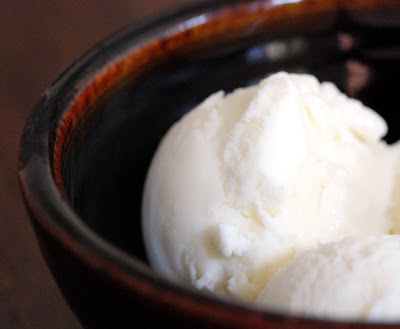
I used to think that people who feed their dogs special diets, or gasp, go as far as to cook for their dogs were crazy. Now I’m on the other side. Even before the recent pet food recall insanity we started exploring alternatives to kibble. Our dog was having unexplained gastrointestinal problems, and we weren’t happy with the somewhat unintelligible ingredient list on the back of most kibble packages. When the Hill’s diet and medication regime prescribed by our vet failed, we started to educate ourselves on dog nutrition and researched new ways to think about feeding that connect better to what a dog might naturally eat, yet are not too difficult to keep up with.
At the extreme end of the alternative spectrum are those that believe in the “prey model” of feeding: a diet which consists entirely of raw, meaty bones. Interesting but not very practical in a Manhattan apartment. We settled on a raw diet of meats (cooked at low temperature to remove bacteria hazards), vegetables and fruits and found a company that makes a dehydrated version that can stand alone or be supplemented with additional foods. The company’s products are human-grade, free of common allergens (including a grain-free version), preservative and additive free, and consist only of ingredients that one can pronounce. It's more expensive (and takes an extra five minutes to prepare) but we figure it's less expensive than long-term medical problems and let's face it: we're willing to do anything for our dog. Some might argue that vegetables and fruits are not naturally present in a dog’s diet but we do like the idea of a more balanced approach to nutrition.
The more we thought about it, the less sense a kibble-based diet made to us and the more frustrated we got with the big business mantra of feeding a single “balanced” kibble diet for life with no variety to “prevent stomach upset”. As soon as we started feeding a more natural diet rich in enzymes present in unprocessed foods, our gastrointestinal woes went away. For a while, we fed just the re-hydrated mix, and then we slowly started adding in other foods to supplement: turkey, chicken, salmon, sardines, yogurt, egg, etc. We stopped feeding all processed snack foods and are sticking to carrots, dehydrated fish skins and pieces of apple as treats. We plan to rotate among the different varieties of dehydrated foods offered and explore other companies that offer similar alternatives. It makes more sense to us to keep rotating sources and composition of nutrients provided the base nutrients are covered. After all, wouldn’t a dog naturally make his meal from a variety of sources?
We are now devotees of this small start-up and get a periodic newsletter update with new “recipes” to add to the food. I tried one for the first time this week and it was a tremendous hit and only took a second to put together. I thought I’d share this with you and your furry friends:
At the extreme end of the alternative spectrum are those that believe in the “prey model” of feeding: a diet which consists entirely of raw, meaty bones. Interesting but not very practical in a Manhattan apartment. We settled on a raw diet of meats (cooked at low temperature to remove bacteria hazards), vegetables and fruits and found a company that makes a dehydrated version that can stand alone or be supplemented with additional foods. The company’s products are human-grade, free of common allergens (including a grain-free version), preservative and additive free, and consist only of ingredients that one can pronounce. It's more expensive (and takes an extra five minutes to prepare) but we figure it's less expensive than long-term medical problems and let's face it: we're willing to do anything for our dog. Some might argue that vegetables and fruits are not naturally present in a dog’s diet but we do like the idea of a more balanced approach to nutrition.
The more we thought about it, the less sense a kibble-based diet made to us and the more frustrated we got with the big business mantra of feeding a single “balanced” kibble diet for life with no variety to “prevent stomach upset”. As soon as we started feeding a more natural diet rich in enzymes present in unprocessed foods, our gastrointestinal woes went away. For a while, we fed just the re-hydrated mix, and then we slowly started adding in other foods to supplement: turkey, chicken, salmon, sardines, yogurt, egg, etc. We stopped feeding all processed snack foods and are sticking to carrots, dehydrated fish skins and pieces of apple as treats. We plan to rotate among the different varieties of dehydrated foods offered and explore other companies that offer similar alternatives. It makes more sense to us to keep rotating sources and composition of nutrients provided the base nutrients are covered. After all, wouldn’t a dog naturally make his meal from a variety of sources?
We are now devotees of this small start-up and get a periodic newsletter update with new “recipes” to add to the food. I tried one for the first time this week and it was a tremendous hit and only took a second to put together. I thought I’d share this with you and your furry friends:
Sardine salad
1 can sardines in water
¼ cup green beans (lightly cooked or canned)
¼ cup melon (we used Cantaloupe)
¼ cup plain yogurt
A dash of Cayenne Pepper
Mix it up, toss it in with their Honest Kitchen food and feed.
Recipe from The Honest Kitchen
¼ cup green beans (lightly cooked or canned)
¼ cup melon (we used Cantaloupe)
¼ cup plain yogurt
A dash of Cayenne Pepper
Mix it up, toss it in with their Honest Kitchen food and feed.
Recipe from The Honest Kitchen
















